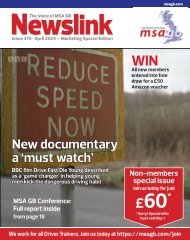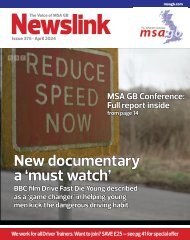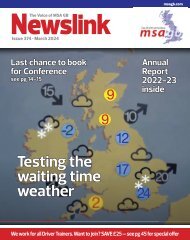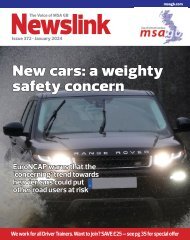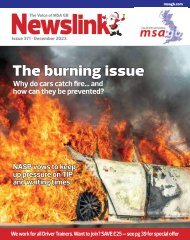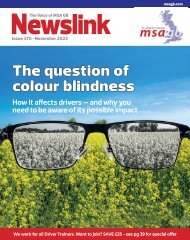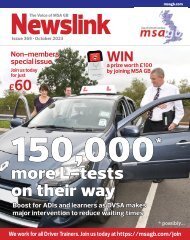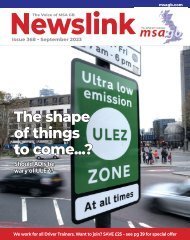Create successful ePaper yourself
Turn your PDF publications into a flip-book with our unique Google optimized e-Paper software.
News<br />
PACTS report highlight risks caused by LCVs<br />
A major report from the Parliamentary<br />
Advisory Council for Transport Safety<br />
(PACTS) has challenged the orthodoxy of<br />
traditional road casualty analysis by<br />
asking ‘what kills whom’ rather than<br />
stressing the most vulnerable road user<br />
groups.<br />
The result is a surprising statistic that,<br />
contrary to popular opinion, cars do not<br />
pose the greatest danger to other road<br />
users: light vans do, followed by HGVs.<br />
While more car occupants die, a<br />
comparison based on number of vehicles<br />
and miles travelled highlights the<br />
propensity of LCVs to be involved in road<br />
traffic fatalities and suggests that more<br />
work needs to be done to improve safety<br />
of these vehicles. That this conclusion<br />
comes at a time of huge growth in LCV<br />
traffic to accommodate the rise in<br />
demand for home deliveries, makes it all<br />
the more pressing that action is taken.<br />
It is particularly interesting when you<br />
consider that the vast majority of the new<br />
breed of drivers getting behind the wheel<br />
of an LCV are armed only with a car<br />
licence and driving experience; perhaps<br />
the time has come for a fresh look at the<br />
licensing rules around smaller vans which<br />
are popular with home courier firms.<br />
This sort of analysis, which places an<br />
emphasis on danger rather than<br />
vulnerability, puts PACTS’ findings more<br />
in keeping with ‘Vision Zero’ and road<br />
danger reduction strategies, such as those<br />
being followed by Transport for London.<br />
The report calls for a new transport<br />
agenda to be created that puts safety at<br />
its heart, rather than considering cost,<br />
congestion reduction or convenience. It<br />
also says that while the Government<br />
wishes to promote healthy, sustainable<br />
active travel, such as walking and cycling,<br />
such initiatives will struggle unless the<br />
public feels safe doing so.<br />
As the Minister for Road Safety<br />
commented last year, while road traffic<br />
casualty statistics highlight how much<br />
work has been done to improve road<br />
safety, it does not necessarily always feel<br />
safe out on the road.<br />
The graphs below offer a snapshot of<br />
the overall analysis and make<br />
enlightening<br />
reading; to read<br />
the full report,<br />
click the panel.<br />
To get the<br />
full story,<br />
click here<br />
‘‘<br />
By analysing the dangers created<br />
by other road users, we get closer<br />
to the philosophy behind the<br />
‘Vision Zero’ strategy, which aims<br />
to eliminate all road deaths<br />
‘‘<br />
12<br />
NEWSLINK n DECEMBER 2020



